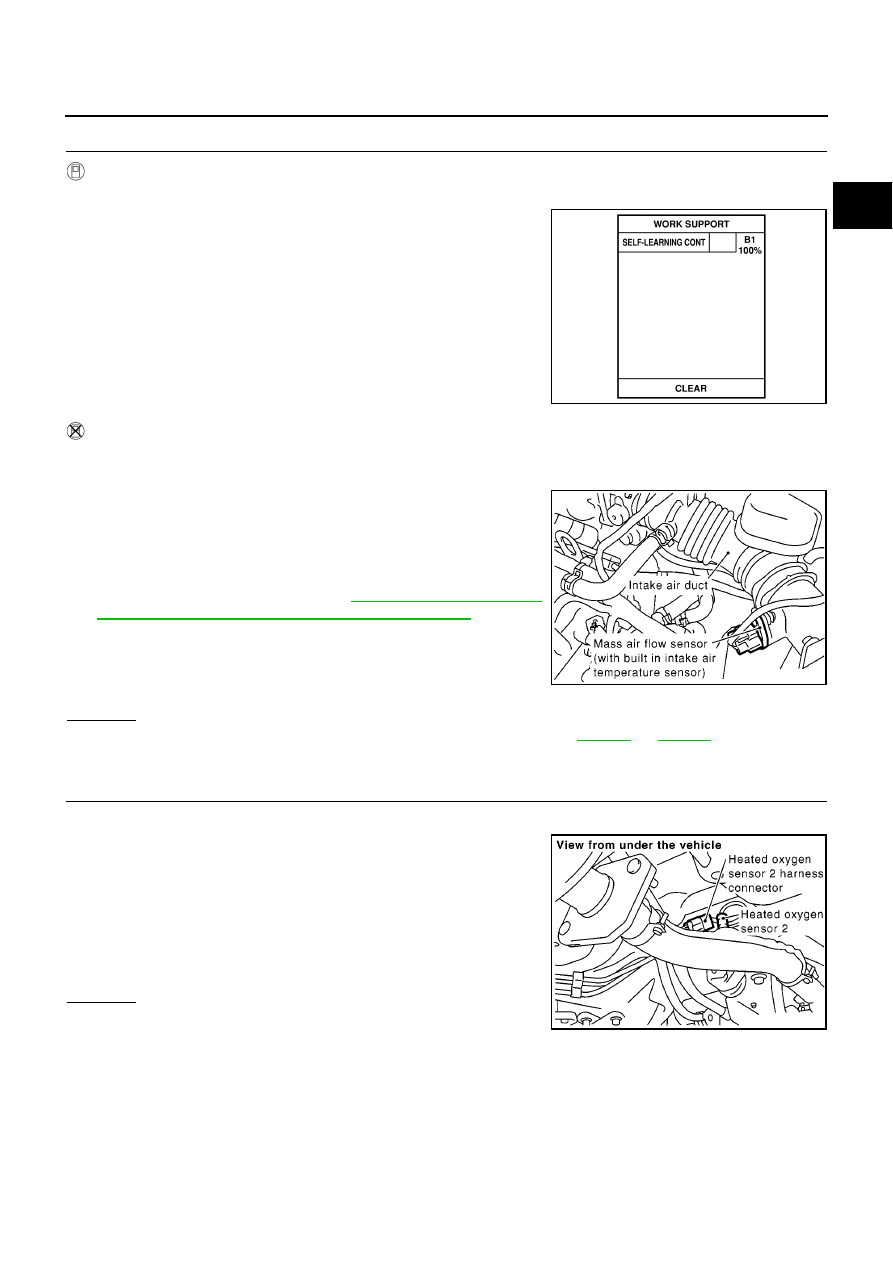Almera Tino V10 (2003 year). Manual - part 78

DTC P0139 HO2S2 (M/T MODELS)
EC-267
[QG (WITH EURO-OBD)]
C
D
E
F
G
H
I
J
K
L
M
A
EC
2.
CLEAR THE SELF-LEARNING DATA
With CONSULT-II
1.
Start engine and warm it up to normal operating temperature.
2.
Select “SELF-LEARNING CONT” in “WORK SUPPORT” mode
with CONSULT-II.
3.
Clear the self-learning control coefficient by touching “CLEAR”.
4.
Run engine for at least 10 minutes at idle speed.
Is the 1st trip DTC P0171 or P0172 detected?
Is it difficult to start engine?
Without CONSULT-II
1.
Start engine and warm it up to normal operating temperature.
2.
Turn ignition switch “OFF”.
3.
Disconnect mass air flow sensor harness connector, and restart
and run engine for at least 5 seconds at idle speed.
4.
Stop engine and reconnect mass air flow sensor harness con-
nector.
5.
Make sure that DTC P0102 is displayed.
6.
Erase the DTC memory. Refer to
EMISSION-RELATED DIAGNOSTIC INFORMATION"
.
7.
Make sure that DTC P0000 is displayed.
8.
Run engine for at least 10 minutes at idle speed.
Is the 1st trip DTC P0171 or P0172 detected?
Is it difficult to start engine?
Yes or No
Yes
>> Perform trouble diagnosis for DTC P0171 or P0172. Refer to
or
.
No
>> GO TO 3.
3.
CHECK HO2S2 GROUND CIRCUIT FOR OPEN AND SHORT
1.
Turn ignition switch “OFF”.
2.
Disconnect heated oxygen sensor 2 harness connector.
3.
Disconnect ECM harness connector.
4.
Check harness continuity between ECM terminal 74 and HO2S2
terminal 3.
Refer to Wiring Diagram.
5.
Also check harness for short to ground and short to power.
OK or NG
OK
>> GO TO 4.
NG
>> Repair open circuit or short to ground or short to power
in harness or connectors.
SEF215Z
MBIB0096E
Continuity should exist.
MBIB0256E